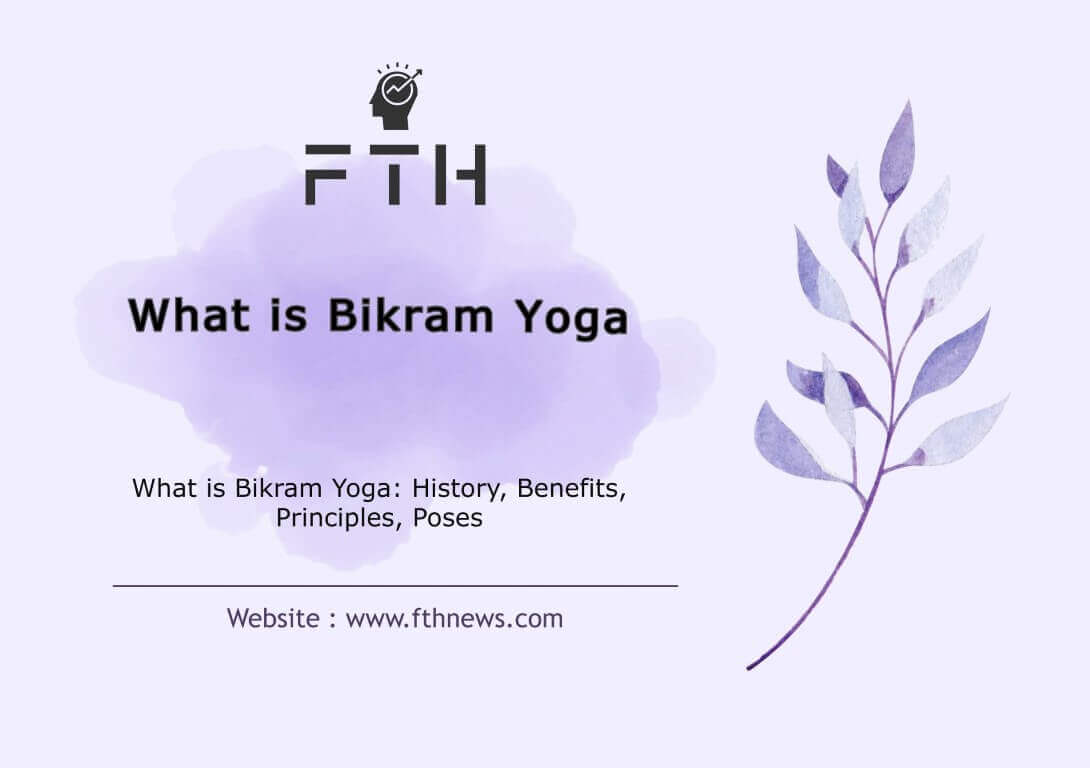
In the ever-expanding world of yoga, where countless styles and variations abound, one name often stands out: Bikram Yoga. But what exactly is Bikram Yoga? Is it just another trendy yoga fad, or does it hold deeper significance and benefits? Let’s delve into the heart of this practice to uncover its essence and unravel the mystery surrounding it.
Understanding the Origins of Bikram Yoga
Bikram Yoga has its roots in the visionary journey of Bikram Choudhury, a luminary yogi born in the vibrant city of Calcutta, India. From his earliest years, Bikram displayed a profound affinity for yoga, immersing himself in the ancient practice under the guidance of esteemed mentors.
Under the tutelage of Bishnu Ghosh, the revered brother of Paramahansa Yogananda, Bikram’s exploration of yoga began. Ghosh, renowned for his pioneering contributions to hatha yoga, recognized Bikram’s exceptional talent and nurtured his burgeoning passion.
Drawing upon a wealth of personal experiences and insights garnered from years of dedicated practice, Bikram embarked on a quest to distill the essence of yoga into a transformative sequence. Guided by a profound understanding of the mind-body connection, Bikram meticulously crafted a sequence comprising 26 postures and two breathing exercises.
Bikram aimed to create a practice that not only strengthened the physical body but also revitalized the spirit and liberated the mind. Rooted in ancient yogic principles yet adapted for modern practitioners, his sequence aimed to offer a holistic approach to well-being.
Through years of refinement and introspection, Bikram honed his sequence, drawing inspiration from the timeless wisdom of yoga and infusing it with his unique perspective. The result was a practice that resonated deeply with countless individuals seeking balance, vitality, and inner peace.
Today, Bikram Yoga stands as a testament to Bikram Choudhury’s enduring legacy—a testament to the transformative power of yoga to uplift, inspire, and empower individuals on their journey toward holistic wellness.
What is Bikram Yoga?
Bikram Yoga is a specific style of hatha yoga developed by Bikram Choudhury. It has gained widespread attention for its unique approach and remarkable benefits. This dynamic practice involves a sequence of 26 postures (asanas) and two breathing exercises (pranayama), meticulously crafted to enhance strength, flexibility, and overall well-being.
Performed in a room heated to 105°F (41°C) with 40% humidity, Bikram Yoga offers a challenging yet invigorating experience. The intense heat is believed to mimic the climate of India, where yoga originated, and serves several purposes:
- Enhanced Flexibility: The heat allows muscles to warm up quickly, facilitating deeper stretching and increased flexibility. This can help prevent injuries and improve overall performance.
- Detoxification: Profuse sweating during the practice is believed to flush toxins from the body, purifying it from within and leaving practitioners feeling rejuvenated.
- Increased Circulation: The combination of heat and movement stimulates blood flow, delivering oxygen and nutrients to muscles, organs, and tissues. This promotes healing and vitality.
Benefits of Bikram Yoga:
Bikram Yoga offers a plethora of benefits, extending beyond traditional yoga practices. Let’s delve into some of its remarkable advantages:
- Fat Burning and Weight Loss:
The intense workout of Bikram Yoga fosters muscle strength and aids in burning calories, promoting heart health and reducing harmful fats.
- Enhanced Energy Levels:
Regular practice of Bikram Yoga revitalizes the body, boosting energy levels and restoring vitality. Focusing on breathing techniques amplifies oxygen intake, fueling the body with boundless energy.
- Stress Relief:
Through mindful breathing and meditation-like practices, Bikram Yoga helps manage stress levels, fostering a sense of calmness and inner peace.
- Flexibility and Strength:
Bikram Yoga systematically stretches and strengthens every muscle, enhancing flexibility and muscle tone. The heat amplifies the effectiveness of stretches, increasing range of motion and reducing the risk of injury.
- Improved Concentration and Focus:
By honing in on breath and movement, Bikram Yoga cultivates mental clarity and sharpens focus, benefiting daily life tasks and activities.
- Cardiovascular Health:
The rigorous nature of Bikram Yoga provides a comprehensive cardiovascular workout, strengthening the heart, lungs, and blood vessels.
- Healing Properties:
Bikram Yoga’s “tourniquet effect” aids in healing old injuries and alleviating chronic pain, offering therapeutic benefits beyond physical exercise.
Beyond the physical benefits, Bikram Yoga emphasizes the connection between mind and body. Each posture is designed not only to strengthen and stretch muscles but also to cultivate mental focus and resilience. The synchronized breathing techniques incorporated into the practice help calm the mind, reduce stress, and promote a sense of inner peace and clarity.
Practicing Bikram Yoga:
To experience the full spectrum of benefits, adhere to the following steps when practicing Bikram Yoga:
- Preparation: Before beginning your session, take time to acclimate to the room temperature and ensure you are adequately hydrated. This will help your body adjust to the intense heat and humidity of the practice environment.
- Warm-up: Initiate the practice with warm-up movements such as planks or gentle stretches. These movements prepare the body for deeper stretches and help prevent injury during the main sequence.
- Main Sequence: Engage in the sequence of 26 postures and breathing exercises within a 90-minute session. Focus on maintaining proper form and alignment in each posture while synchronizing your breath with your movements. This sequence is designed to enhance muscle strength, flexibility, and balance, providing a comprehensive workout for the entire body.
- Cool Down: Conclude the session with relaxation exercises to calm the heart rate and induce a state of tranquility. This is an essential part of the practice that allows the body to recover and helps to prevent muscle soreness and fatigue. Take this time to focus on deep breathing and allow yourself to fully relax and unwind after your practice.
By following these steps and incorporating Bikram Yoga into your regular routine, you can experience the full range of benefits that this dynamic practice has to offer. Whether you’re looking to improve your physical fitness, reduce stress, or enhance your overall well-being, Bikram Yoga provides a transformative experience that nurtures the body, mind, and spirit.
Who Should Avoid Bikram Yoga?
While Bikram Yoga offers numerous benefits, there are certain individuals who should exercise caution or avoid this practice altogether. Here are some considerations:
Pregnant Women:
Bikram Yoga involves practicing in a heated room, which may not be suitable for pregnant women, especially during the first trimester. The intense heat and humidity could potentially raise the body temperature to levels that may harm the fetus. Pregnant women should consult with their healthcare provider before practicing Bikram Yoga or opt for prenatal yoga classes specifically designed for pregnancy.
Individuals with Certain Medical Conditions:
People with certain medical conditions such as cardiovascular issues, respiratory problems, uncontrolled hypertension, or other chronic health conditions should consult with their healthcare provider before participating in Bikram. The intense heat and physical exertion may exacerbate these conditions or pose risks to their health.
Heat Sensitivity:
Individuals who are sensitive to heat or have conditions such as heat intolerance, heat exhaustion, or heatstroke should avoid Bikram. Exercising in a hot and humid environment can lead to dehydration, overheating, and other heat-related illnesses in susceptible individuals.
Injuries or Chronic Pain:
If you have existing injuries, chronic pain, or musculoskeletal issues, Bikram may not be suitable for you, especially if you are unable to modify or adapt the postures to accommodate your condition. Practicing in a heated environment may exacerbate pain or lead to further injury.
Dehydration or Electrolyte Imbalance:
Bikram Yoga involves profuse sweating, which can lead to dehydration and electrolyte imbalances if adequate fluid intake and electrolyte replenishment are not maintained. Individuals prone to dehydration or with conditions such as kidney disease should exercise caution and ensure proper hydration before, during, and after the practice.
Recent Illness or Surgery:
Individuals recovering from recent illness, surgery, or medical procedures should avoid Bikram until they have fully recovered and received clearance from their healthcare provider. Exercising in a heated environment may strain the body and impede the healing process.
Ultimately, it’s essential to listen to your body and prioritize your safety and well-being. If you have any concerns or medical conditions, consult with a qualified healthcare professional before starting Bikram Yoga or any other rigorous exercise program. Additionally, consider seeking guidance from a certified yoga instructor who can provide modifications and alternatives tailored to your individual needs and limitations.
Bikram Yoga Poses
here are some of the Bikram Yoga poses:
- Standing Deep Breathing (Pranayama): This is the starting pose in Bikram, focusing on deep inhalation and exhalation to oxygenate the body and calm the mind.
- Half Moon Pose (Ardha-Chandrasana): A lateral bending posture that stretches the sides of the body and improves balance.
- Awkward Pose (Utkatasana): A chair pose variation that strengthens the thighs, calves, and ankles.
- Eagle Pose (Garudasana): A standing posture that stretches the shoulders, upper back, and hips, while improving balance and focus.
- Standing Head to Knee Pose (Dandayamana-Janushirasana): A forward bending pose that stretches the hamstrings and calves and improves concentration.
- Standing Bow Pose (Dandayamana-Dhanurasana): A backbending posture that opens the chest, stretches the shoulders, and improves spinal flexibility.
- Balancing Stick Pose (Tuladandasana): A dynamic balancing pose that strengthens the core, legs, and arms while improving coordination.
- Standing Separate Leg Stretching Pose (Dandayamana-Bibhaktapada-Paschimotthanasana): A forward bending pose that stretches the hamstrings, calves, and spine.
- Triangle Pose (Trikanasana): A lateral bending posture that stretches the sides of the body, opens the hips, and improves spinal alignment.
- Standing Separate Leg Head to Knee Pose (Dandayamana-Bibhaktapada-Janushirasana): A forward bending pose that stretches the hamstrings, calves, and spine.
These are just a few examples of the postures included in the Bikram sequence. Each pose offers unique benefits for the body and mind, and practicing them in sequence within the heated room environment enhances their effectiveness.
Conclusion:
In essence, Bikram Yoga is more than just a physical workout; it’s a journey of self-discovery, resilience, and transformation. By embracing the heat, the postures, and the breath, practitioners can tap into a profound sense of well-being and vitality that extends far beyond the confines of the yoga mat.
So, what is Bikram Yoga? It’s a fusion of tradition and innovation, heat and movement, discipline and freedom a holistic practice that invites us to explore the depths of our bodies, minds, and spirits. Whether you’re a seasoned yogi or a curious beginner, stepping into the hot room of Bikram Yoga offers an opportunity to embark on a transformative journey unlike any other.














